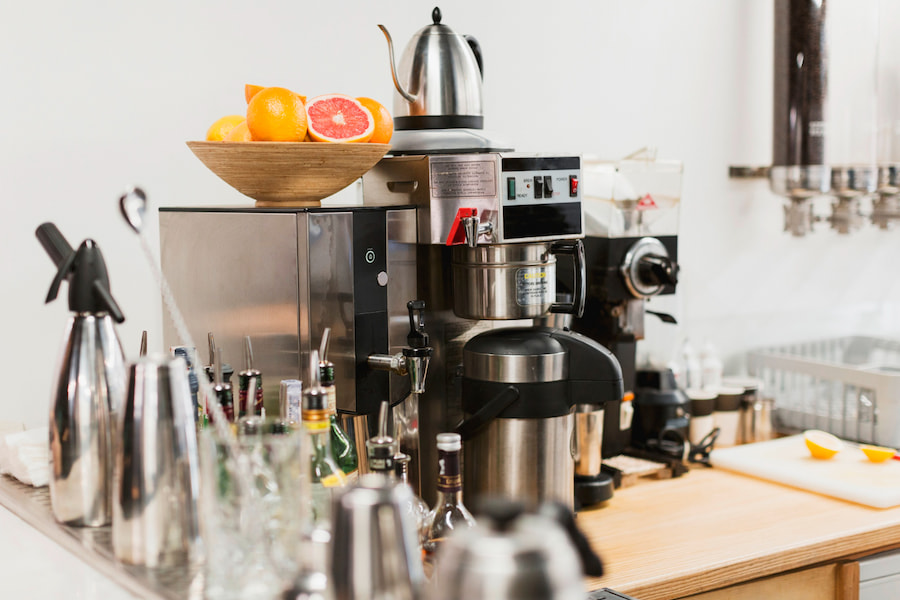Kitchen Equipments – Having your workplace ready or partially cleaned up beforehand helps a lot in avoiding delays when beginning the cleaning activity and taking measures to be safe by being the first to do so. This involves off-at-and unplugs-electrical-appliances, use-appropriate-protection-accessories (like gloves and masks), and selecting-right-cleaning-agents like Taylor 013074 cleaning brush for different parts of surfaces and machines. Proper precautions and safe techniques are two keys to ensuring that the cleaning process goes, without accidents, right and as effectively as possible. You have successfully created a general summary for the provided statement.
The cleaning routine includes surfaces in the kitchen:
The discipline of the cleanliness of kitchens on a daily basis is the key measure for the high level of hygiene. Among the activities are spraying or wiping down all surfaces with appropriate chemicals, cleaning spills immediately to avoid slipping and contamination, and making sure that the food preparation areas are cleaned with the required chemicals before and after use. A cleaning routine and a checklist will keep you sure that the kitchen is clean and regular.
Deep cleaning protocol for kitchen appliance:
Cleaning the cooking appliances, including stoves, oven, and grill, on a regular day is necessary to make room for grease buildup, food droppings, and other contaminants that can affect the taste of the food and food safety. The deep cleaning process involves pulling out all the parts and promptly soaking them in special solutions, scrubbing, and washing them all to the gills before snapping them back into the place and calling it a day. Both of these conditions have the effect of not only keeping the appliances clean but also improving the efficacy of the machines. Refrigeration units and coolers need to be cleaned on a regular basis so that mold and bacteria cannot grow there and may pollute food, as a result of which will end with health issues.
The process can include such procedures as removing the products that are in the units, disposing the products that are expired or spoiled, decontamination of the units using food safe disinfecting agents and checking the temperature of the products to ensure that this one meets the food safety standards. The spot for a dishwasher and sink appears in the design to prevent cross-contamination and to make sure that dishes, utensils, and cooking tools are completely sanitized. This should include wipe down and sanitize the sink, The main characters of the story are Santa Claus and the Littlest Elf. The story begins with the narrator, a little girl, explaining that she cannot sleep because it is Christmas Eve and she is excited by all the presents under the tree. Perform periodic leak inspections and water damage repair to prevent growth of mold and mildew.
Cleaning and repaving HVAC ducts:
The kitchen equipments, such as kitchen hoods and fans is extremely important for keeping smoke, steam, and jarring smells from the kitchen. Such mechanisms should be cleaned regularly so that you can avoid cases of grease contamination, which in turn poses a fire hazard. It involves the filter clean-up, fan and motor inspection for proper functioning as well as the ensuring of clear air vents.
Use of and Washing of the Laundry Tools and Electronics:
The unit appliances, like a blender and toaster, have small cracks and grease, which become a disadvantage to their flawless work and hygiene. For the disinfection of these pieces, they should be disconnected and stripped as widely as feasible. Non-removable parts only need to be wiped with a lightly moistened cloth that has been mixed with a detergent. When the non-disposable components are done, you can then wash the removable parts with warm soapy water. The kitchen equipments need to be completely dry throughout this phase. They should not be plugged into an outlet until after they have been completely assembled. Routine maintenance ensures that bactericidal build-up is avoided and maximizes the applicables’ shelf-life.
Comprehensive Care for the Food Preparation Spaces:
Controlling food preparation areas implies complete attention to the cleaning workflow to prevent cross-contamination and guarantee food safety. These zones must be deposed with food-grade disinfectants prior to usage and after the usage. Surfaces such as cutting boards, countertops, sinks, etc. must be soaked in a mixture of hot, soapy water to kill the germs and, afterward, sanitized. Chefs widely use a duck system of board and basket segmentation to avoid cross-contamination during the preparation of raw and cooked food.
Take Care of Factory Equipment and Cutting Tools:
Blades, peelers and other cutting instruments can easily collect germs reaching deep within their components, and this makes them either old or broken if not properly handled. This equipment should be instantly spotless the completion of the process with a non-toxic detergent, for example, and then a respective amount of drying to prevent their structures from corrosion or rust. Then keeping them in sharp condition is a factor as well. It is because dull tools are not just ineffective but also dangerous. The utensils should be checked for damages and cleaned properly by replacing any items that are defective as a suitability measure for hygiene and safety.
Summary:
Once cleaning is done of kitchen equipments, arranging the kitchen is the next important thing that should be done to ensure the kitchen is caught up with a smooth working flow so item can be accessed easily and kept in the right place. Here this involves organizing equipment and instruments in a way that makes sense, labeling bins and cabinets to be easily identified, and ensuring that stock that gets opened regularly is in the easiest location to reach. An orderly kitchen facilitates a great deal of work and also helps in keeping the cleanliness at the top, since it trims down on mess. Visit Tchtrends for more informative blogs.

